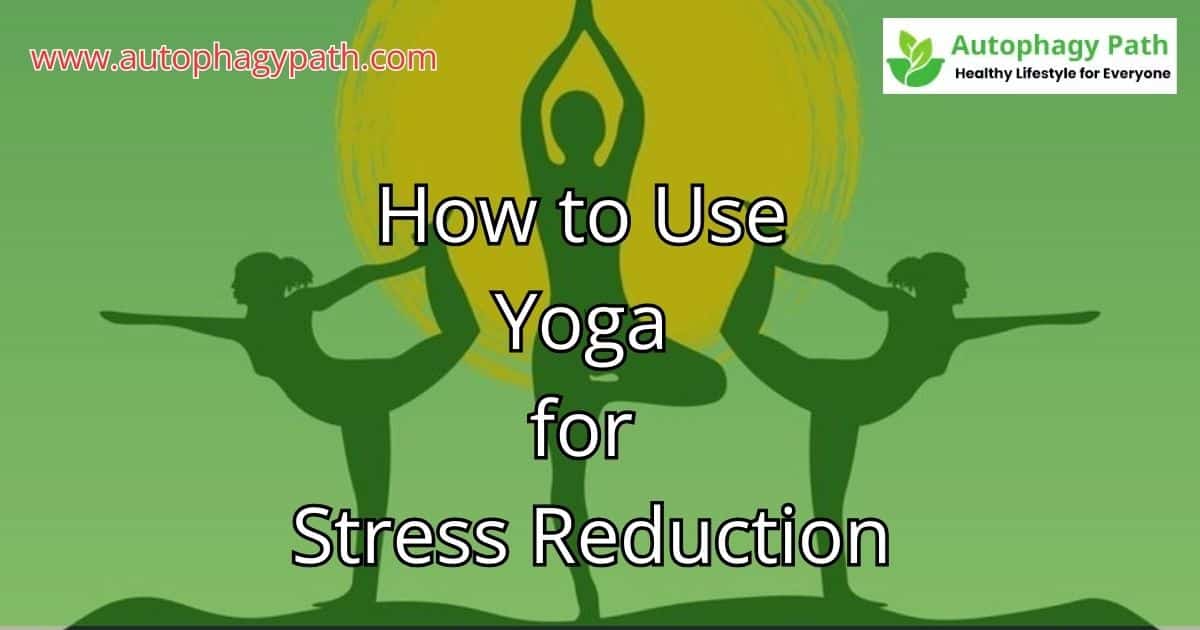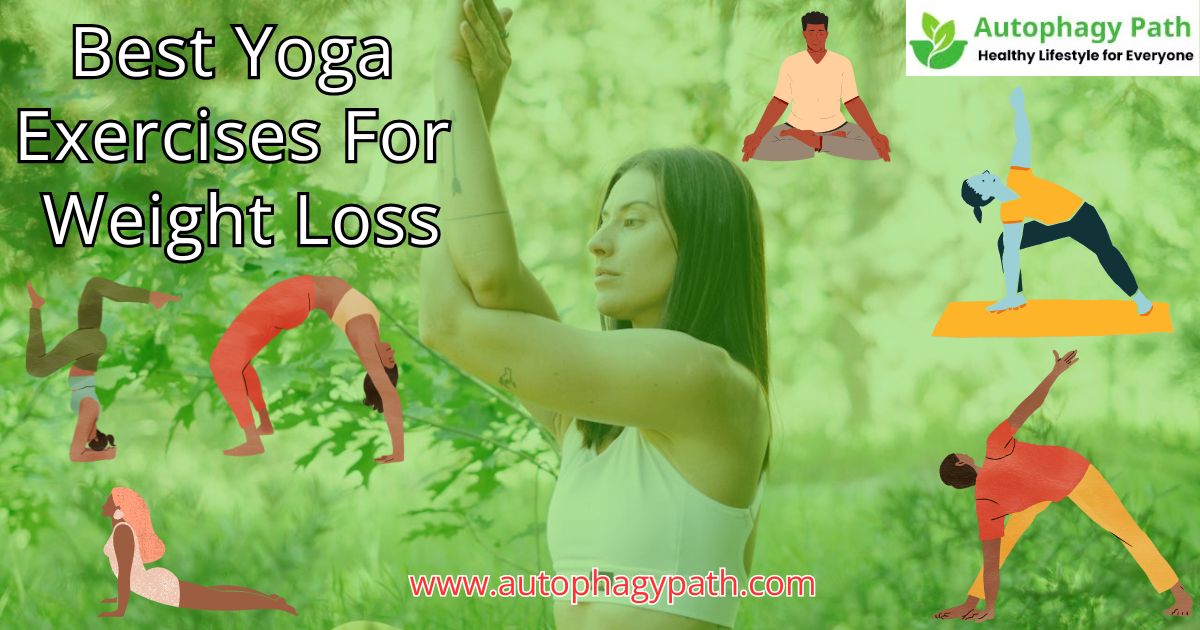How to Use Yoga for Stress Reduction
Yoga offers a multifaceted approach to the body and mind. You can explore How to Use Yoga for Stress Reduction elaborately in this blog post with a defined purpose.
Since evolution, stress has become part and parcel of all living creatures for their survival mechanisms. The Humans are unexceptionable. It is the human way of preparing to face or flee from danger, commonly known as the fight or flight response. However, in our modern lives, stress often arises from non-life-threatening situations such as work pressures, financial concerns, or relationship issues. Chronic stress can lead to a host of physical and mental health problems, including being overweight, anxiety, depression, heart disease, cancer, and weakened immune function.
How to Use Yoga for Stress Reduction
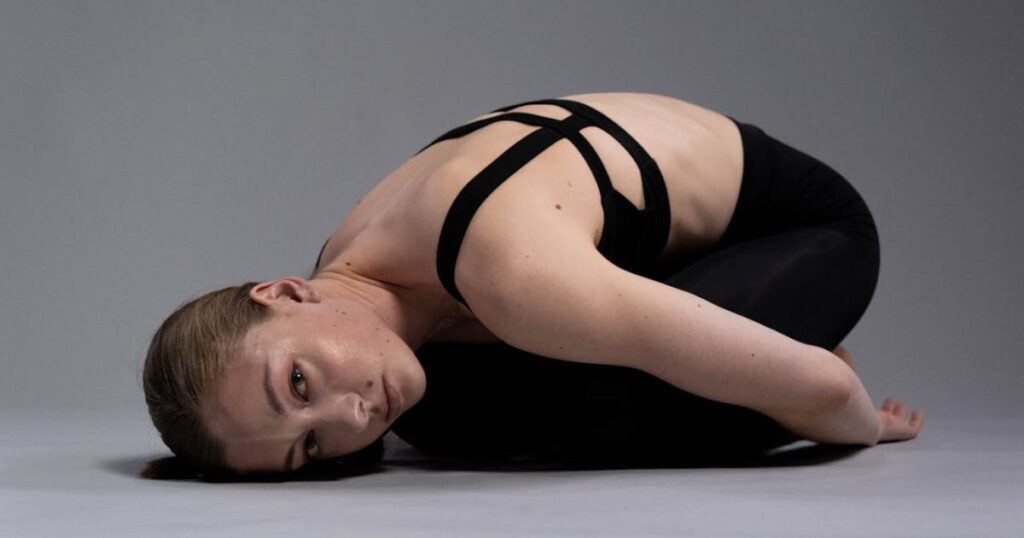
Table of Contents
How Yoga Helps Reduce Stress
Yoga offers a multi-dimensional way to the body and mind. Here are some key benefits of yoga for stress relief and yoga poses for stress relief:
Physical Benefits: Yoga involves various postures (asanas) that stretch and strengthen the body, improving flexibility, balance, and muscle tone. This physical activity releases tension stored in the muscles, promoting relaxation. Incorporating yoga into your daily routine can be highly beneficial, especially with other healthy lifestyle practices like intermittent fasting and a ketogenic diet.
Mental and Emotional Benefits: Yoga encourages mindfulness and present-moment awareness, which can help calm the mind and reduce the mental chatter that often accompanies stress. Practices like meditation and pranayama (breathing exercises) help regulate the nervous system and promote a sense of calm.
Scientific Evidence: Numerous studies have shown that yoga can lower levels of the stress hormone cortisol, reduce anxiety and depression, and improve overall mental health besides losing body weight. For example, a study published in the Journal of Alternative and Complementary Medicine found that participants who practiced yoga regularly reported significant mood. The ketosis achieved through a ketogenic diet can also complement yoga.
Keyed Elements of Yoga for Stress Reduction
To effectively reduce stress through yoga, it is necessary to incorporate three main elements: physical postures, breathing techniques, and mindfulness practices.
Physical Postures (Asanas): Certain yoga poses are particularly effective for stress relief. These include forward bends, gentle twists, and restorative poses. For example, Child Pose (Balasana) and Legs-Up-The-Wall Pose (Viparita Karani) are known for their calming effects. Moderate exercise, such as yoga sessions, adds to this balance by providing physical benefits without overexertion.
Breathing Techniques (Pranayama): Breathing exercises are a cornerstone of yoga practice. Techniques such as diaphragmatic breathing, alternate nostril breathing (Nadi Shodhana), and the relaxing breath (4-7-8 technique) help activate the parasympathetic nervous system, which counteracts the stress response.
Meditation and Mindfulness: Meditation and mindfulness practices teach you to observe your thoughts and feelings without judgment. It can help break the cycle of stress and anxiety. Mindfulness meditation, in particular, has been shown to reduce stress and improve emotional regulation. Moderate-intensity exercise helps maintain energy levels and supports a relaxed mind.
Practical Tips for Starting a Yoga Practice
Starting a yoga practice can feel daunting, especially if you are new to it. Here you can find a few applicable cues to begin with:
Find the Right Style: There are many styles of yoga, from the gentle and restorative to the vigorous and intense. For stress reduction, consider starting with Hatha, Yin, or Restorative Yoga, which focuses on slow, mindful movements and deep relaxation.
Create a Conducive Environment: Set up a quiet, comfortable space for your practice. Use a yoga mat, wear comfortable clothing, and consider playing soft, calming music to enhance the experience.
Set Realistic Goals: Begin with short, manageable sessions, such as 10-15 minutes. When you become more acquainted with the practice, you can step up its duration and frequency to sync with your consistent practice.
A Simple Yoga Routine for Stress Reduction
Here is a beginner-friendly yoga routine designed to help you reduce stress. Practice this sequence regularly to experience its calming effects. Salient feature of few more assanas like chaturanga dandasana urdhva mukha svanasana will follow.
Child Pose (Balasana): Bend forward on the Yoga mat. Keep your toes together. Feel comfortable to sit on heels. Keep separating your knees. Maintain hip-width apart. Lay down the torso in between your thighs. Keep enhancing arms together. Touch your forehead on the Yoga mat. Hold for 1-3 minutes, breathing deeply.
Cat-Cow Pose (Marjaryasana-Bitilasana): Begin on your hands and knees in a tabletop position. Take a deep breath as you arch your back (Cow Pose), besides taking away your head and tailbone. Exhale as you round your back (Cat Pose), tucking your chin and tailbone. Repeat for 5-10 breaths.
Standing Forward Bend (Uttanasana): Keeping your feet hip-width apart, keep standing. Inhale, raise your arms overhead, exhale, and fold forward from the hips, keeping your knees slightly bent. Let your head hang and hold your elbows. Stay here for 1-2 minutes, breathing deeply.
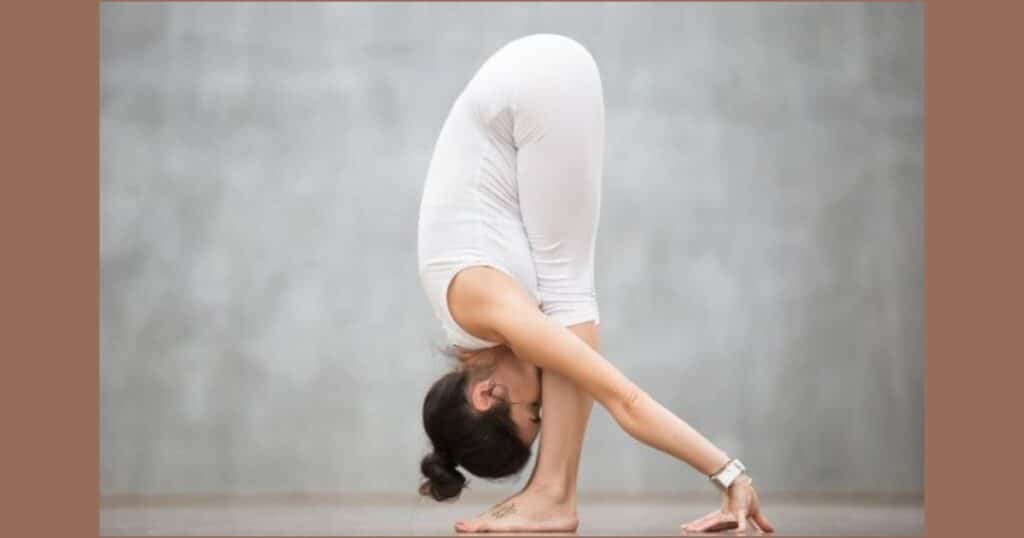
Legs-Up-The-Wall Pose (Viparita Karani): You can sit near a wall and lay on your back. Swing your legs up the wall, forming an L-shape with your body. Keep your arms by your sides. Keep closing your eyes. Hold for 5-10 minutes, focusing on your breath.
Alternate Nostril Breathing (Nadi Shodhana): You may feel relaxed in sitting while keeping your spine straight. Use your right thumb to keep closing your right nostril by using your right thumb. Take a deep breath through your left nostril. Through a similar passion, close your left nostril with your right ring finger. Breathe out through your right nostril. Continue this pattern for 5-10 breaths, then switch sides.
Corpse Pose (Savasana): Keeping lieng flat on your back with your legs extended and arms at your sides, palms facing up. Keep closing your eyes. Keep taking slow, deep breaths. Keep allowing your body to relax comfortably. Remain in this posture for 5-10 minutes.
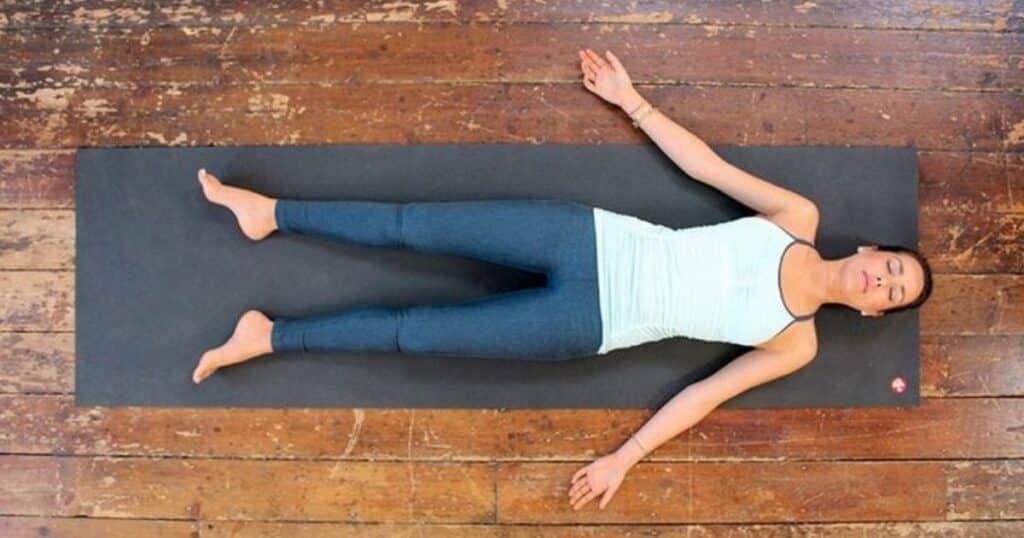
Yoga Holistic Approach to Stress Management
In a world where stress seems to be a constant companion, finding effective ways to manage it is crucial. Yoga stands out as a powerful, holistic approach to stress management, addressing physical, mental, and emotional aspects. Unlike quick fixes, yoga encourages a deeper connection with oneself, fostering a sense of inner peace and resilience. Additionally, prioritizing autophagy and self-healing mechanisms is crucial for stress management, and yoga can improve sleep quality through autophagic processes, helping you wake up refreshed and ready for the day.
Physical Benefits: Physically, yoga helps to release tension stored in the body. Stress often manifests as tightness in the shoulders, neck, and back. Through various poses and stretches, yoga alleviates improved flexibility and posture. Poses such as Downward Dog, Cat-Cow, and Forward Bends gently stretch the muscles, releasing built-up stress and promoting relaxation.
Mental Benefits: Mentally, yoga offers a sanctuary from the constant chatter of the mind. It encourages mindfulness, the practice of being present in the moment. By focusing on the breath and the body, yoga practitioners learn to quiet their minds, reducing the impact of stressful thoughts. This mindful approach helps to break the cycle of stress and anxiety, promoting a sense of calm and clarity.
Emotional Benefits: Emotionally, yoga helps to regulate the nervous system, reducing the production of stress hormones and increasing the release of endorphins, the natural mood enhancers. Practices such as heart-opening poses (like Camel Pose and Bridge Pose) and restorative poses (such as Child’s Pose and Savasana) help to release emotional blockages, fostering a sense of emotional balance and well-being.
Tailoring Yoga to Individual Needs
One of the strengths of yoga is its adaptability. It can fit the needs of individuals at different fitness levels and with various stressors. Here are a few tailored approaches to using yoga for stress reduction:
For Busy Professionals: For those with a hectic schedule and focus-centered needs to be very effective. Morning routines that include Sun Salutations and simple stretches can set a positive tone for the day. Even a five-minute break during the workday for deep breathing or a quick sequence of chair yoga poses can.
For Caregivers: Caregivers often experience high stress due to the demands of caring for others. Gentle, restorative yoga practices can provide much-needed relaxation and rejuvenation. Poses like Legs-Up-the-Wall and Supported Fish Pose offer deep relaxation and help to restore energy levels.
For Students: Students can benefit from yoga by incorporating it into their study routine. Yoga practices that focus on improving concentration and reducing anxiety can be. Balancing poses such as Tree Pose and Warrior III can enhance focus, while breathing exercises like Ujjayi Breath can calm the mind before exams or presentations.
Advanced Yoga Techniques for Stress Reduction
Beyond the basics of asanas and pranayama, there are advanced yoga techniques that can further enhance stress reduction:
Yoga Nidra: Known as yogic sleep, Yoga Nidra is a guided meditation practice that induces deep relaxation. It involves lying down in Savasana while guided through a body scan and visualization exercises. This practice helps to release deep-seated tensions and promotes a state of profound rest.
Kundalini Yoga: Kundalini Yoga combines dynamic breathing techniques, chanting, and specific postures to awaken energy and promote emotional balance. Practices like Breath of Fire and chanting mantras like “Sat Nam” can enhance overall vitality.
Restorative Yoga: It takes gentle postures for a certain period. Blankets, bolsters, and blocks are in this yoga practice for support. This practice is deeply relaxing and helps to calm the nervous system. Poses like the Supported Child’s Pose and Reclining Bound Angle Pose are excellent for relieving stress and promoting a sense of calm.
Integrating Yoga with Other Stress-Reduction Techniques
Combining Yoga with Meditation: While yoga prepares the body and mind for meditation, meditation can deepen the stress-reducing benefits of yoga. Starting a yoga session with mindful breathing and ending with a short meditation can create a powerful synergy, enhancing relaxation and mental clarity.
Yoga and Aromatherapy: Using essential oils during yoga can enhance the experience. Scents like lavender, chamomile, and sandalwood are known for their calming properties. Diffusing these oils or applying them to the skin before or during yoga can help deepen relaxation and reduce stress.
Yoga and Journaling: A yoga session can be a therapeutic way to process emotions and thoughts. Writing down feelings and reflections that arise during yoga can provide insights and help in releasing mental and emotional stress.
Creating a Supportive Environment for Yoga Practice
The environment in which you practice yoga can significantly influence its effectiveness in reducing stress. Here are some tips for creating a supportive yoga space:
Choose a Quiet Space: Select a place where you won’t be interrupted. A quiet, peaceful environment helps to create the right atmosphere for relaxation and mindfulness.
Use Comfortable Props: Ensure you have a good-quality yoga mat and comfortable clothing. Props like blocks, straps, and bolsters can make poses more accessible and comfortable, enhancing your practice.
Incorporate Calming Elements: Adding elements such as soft lighting, soothing music, and pleasant scents can enhance the calming effects of yoga. Candles, essential oil diffusers, and calming music playlists can create a serene atmosphere.
Practice Regularly: Establish a regular practice schedule. Like other endeavors, it takes consistent action to get full yoga benefits. Whether it is a few minutes each morning or a long session a few times a week, regular practice helps to integrate yoga into your daily life and make stress reduction a natural part of your routine. Integrating these autophagy, ketosis, moderate-exercises, and moderate-intensity exercise, intermittent fasting practices creates a holistic approach to reducing stress and enhancing overall health.
Frequently Asked Questions
Reduce stress by practicing yoga through deep breathing, mindfulness, and physical postures. Regular yoga sessions calm the mind, relax the body, and improve stress resilience.
Restorative yoga is best for stress relief. It involves gentle poses, deep breathing, and extended holds to calm the mind, relax the body, and reduce tension.
Do yoga at least 3-4 times a week. Consistent practice enhances relaxation, mindfulness, and overall well-being.
Yoga improves mental stress by promoting relaxation, reducing cortisol levels, enhancing mindfulness, and encouraging deep, calming breaths. It helps shift focus away from stressors and cultivates a sense of inner peace.
Conclusion
Yoga offers a holistic approach to managing stress, blending physical postures, breathing techniques, and meditation to promote relaxation and well-being. Yoga in your daily routine can cultivate a greater sense of calm, resilience, and mindfulness.
Remember, the key to reaping the benefits of yoga is consistency and making it a part of your lifestyle. Start small, be patient with yourself, and enjoy the journey towards a more balanced and stress-free life. Embrace serenity and let yoga be your guide to a healthier, happier you.

